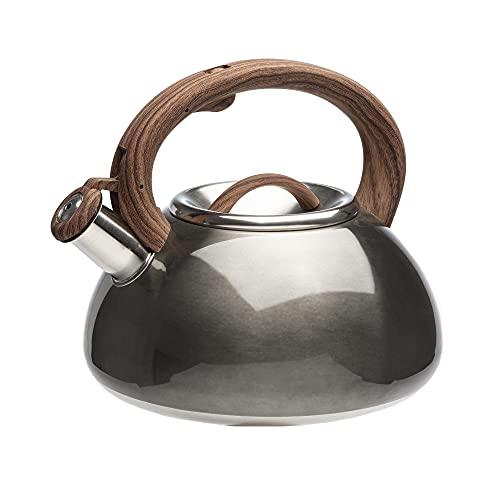Ice cream cones originated in the 19th century, with the exact date and inventor unknown. The concept of using a cone as a vessel for holding ice cream can be traced back to ancient Rome and Greece, where cones in the form of wafers were rolled and baked hard.
Over time, these cones transitioned to being used specifically for desserts and ice cream. More detailed history and information about ice cream cones can be found on websites such as Wikipedia, Serious Eats, and IDFA.
Table of Contents
ToggleAncient Origins Of Cones
The history of ice cream cones can be traced back to ancient Rome and Greece, where cones in the form of wafers were rolled and baked hard. However, it needs to be made clear when exactly they were used for desserts and ice cream. The concept of using cones as a vessel for holding ice cream gained popularity in the late 19th century.
Before the invention of cones, ice cream was often served in dishes or on top of wafers. The idea of a cone-shaped container made it easier to enjoy ice cream on the go without the need for utensils.
Today, there are various types of sugar cones available in the market, like Keebler Cones Sugar, Joy Sugar Cones, Let’s Do Organic Sugar Cones, and many more. These cones add a delightful crunch and enhance the overall ice cream experience.
Ice Cream Cones: France’s Contribution
The birth of ice cream cones can be traced back to France, where they were first filled with ice cream. In the late 19th century, the exact date is uncertain, and a popular story claims that a Syrian immigrant named Ernest Hamwi invented the ice cream cone at the 1904 St. Louis World’s Fair.
Hamwi was selling waffle pastries next to an ice cream vendor who ran out of dishes. In a moment of inspiration, Hamwi rolled his waffle into the shape of a cone and gave it to the ice cream vendor, and thus, the ice cream cone was born.
The Evolution In America
The evolution of ice cream cones in America marked a significant milestone in the history of this delicious treat. The introduction of ice cream cones to America revolutionized the way people enjoyed ice cream.
In the early 1900s, ice cream cones started gaining popularity and were being commercially produced and sold. Various brands, such as Keebler Cones Sugar, Joy Sugar Cones, and Let’s Do Organic Sugar Cones, emerged, offering different options for ice cream lovers.
The availability and accessibility of ice cream cones made it easier for people to enjoy ice cream on the go. Instead of having to sit down and eat ice cream in a bowl, people could now walk and indulge in their favorite frozen treat.
The commercialization of ice cream cones also led to the creation of new flavors and innovations, such as Nestle Drumstick Vanilla Ice Cream Cones and Let’s Do Gluten-Free Ice Cream Cones.
Overall, the introduction and popularization of ice cream cones in America played a significant role in shaping the way we enjoy ice cream today. It brought convenience, variety, and portability to this beloved frozen dessert.
Innovations And Variations
There are various innovations and variations when it comes to ice cream cones. One notable variation is the different types of cones available. Sugar cones and waffle cones are the most common and popular varieties. Sugar cones are made from sweetened dough and have a crisp texture. Waffle cones, on the other hand, are made from a waffle-like batter that is cooked until crispy.
Another aspect of innovation in ice cream cones is the unique flavors and coatings. Many ice cream shops offer a wide range of cone flavors, such as chocolate, strawberry, and even matcha.
Additionally, cones can also be coated with various ingredients like sprinkles, nuts, or chocolate chips. These variations add an extra layer of flavor and texture to the ice cream experience.
Legacy And Cultural Significance
The legacy and cultural significance of ice cream cones are undeniable. These delightful treats have had a tremendous impact on popular culture, both in the past and present. From their invention in the early 1900s to their widespread availability today, ice cream cones have become an iconic symbol of summertime and indulgence.
In modern times, ice cream cones have evolved to cater to ever-changing consumer preferences. There is now a wide range of flavors and toppings available, allowing for endless customization and innovation. Moreover, ice cream cones have also found their way into various dessert creations, such as ice cream sundaes and milkshakes, further cementing their place in the culinary world.
Looking toward the future, it is exciting to consider the potential trends and advancements in the world of ice cream cones. With the rise of plant-based diets, we may see an increase in vegan-friendly cone options. Additionally, technology may play a role in creating unique and interactive cone experiences, such as 3D-printed cones or cones with edible designs.
Ice cream cones have left a lasting mark on popular culture and continue to captivate people of all ages. As we celebrate their history and cultural significance, let’s eagerly anticipate the delicious possibilities that lie ahead for ice cream cones.
Frequently Asked Questions On the History Of Ice Cream Cones
When Was Ice Cream Cones Invented?
Ice cream cones were invented in 1904.
What Were Ice Cream Cones Originally Invented For?
Ice cream cones were originally invented as a way to hold and eat ice cream conveniently.
Where Did Ice Cream Cones Originate?
Ice cream cones originated in France.
Conclusion
The history of ice cream cones is a delicious journey through time that highlights the creativity and ingenuity of people throughout the centuries. From the ancient Persians’ use of thin wafers to the innovative St. Louis ice cream vendor at the 1904 World’s Fair, the evolution of the ice cream cone is a testament to human innovation and our unending love for this sweet, frozen treat.
Today, ice cream cones are a beloved and iconic part of our culinary culture, bringing joy and delight to people of all ages. As we savor the timeless pleasure of a scoop of ice cream nestled in a cone, we can appreciate the rich history and the tasty legacy of this simple yet delightful invention.






